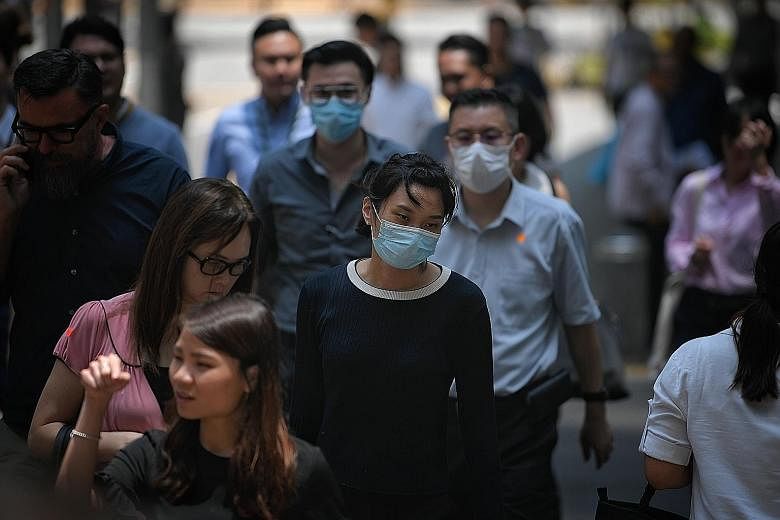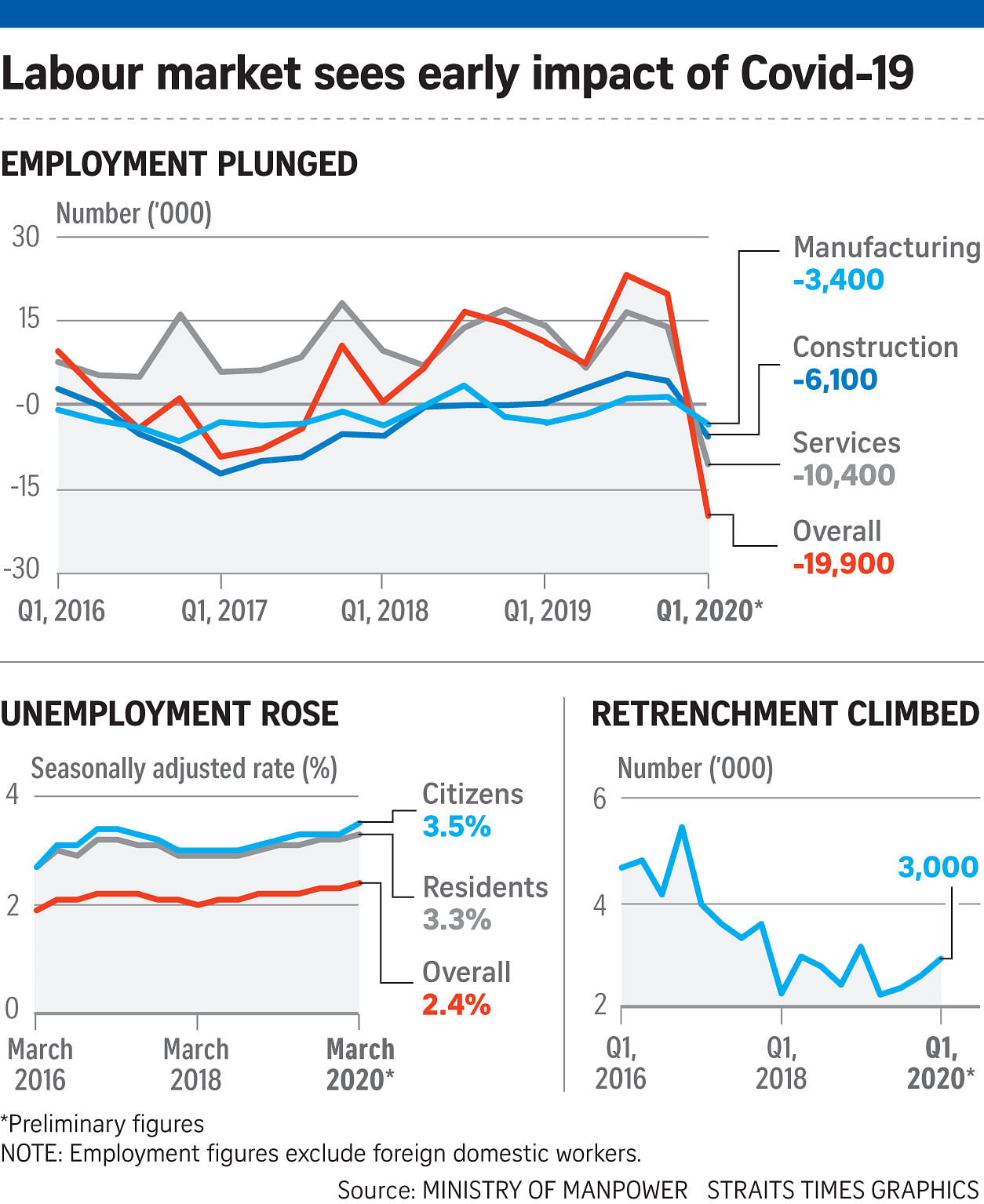The number of people working in Singapore, excluding maids, plunged by 19,900 in the first three months of the year as the early impact of the Covid-19 pandemic disrupted economic activity.
This was the sharpest quarterly contraction since the severe acute respiratory syndrome (Sars) outbreak, when employment fell by 24,000 in the second quarter of 2003.
But many fear that the worst is yet to come as the real impact of the outbreak on local employment will be felt only further down the road.
The decline last quarter was due to a significant reduction in foreign employment. Employment of locals - Singaporeans and permanent residents - still grew at a "modest pace", preliminary data released by the Ministry of Manpower (MOM) showed yesterday.
The number of workers laid off in the first quarter of this year rose to 3,000, higher than the 2,670 affected in the fourth quarter of last year, but lower than the 12,760 job losses in the first quarter of 2009 due to the global financial crisis.
Unemployment rates also rose in March to the highest level in over a decade, but remained lower than the peaks brought about by Sars and the global financial crisis.
However, Manpower Minister Josephine Teo told reporters yesterday that the impact of Covid-19 restrictions was probably felt only from February onwards, whereas businesses were still active in January for the Chinese New Year period.
The data also does not cover the circuit breaker period that started on April 7, when businesses deemed non-essential had to close their workplaces, she said during the virtual media briefing.
"Even though local employment is holding up for now, we are very mindful that companies may well have implemented cost-cutting measures in order to save jobs," she said, adding that the ministry is monitoring the situation.
She noted that about a third of the extraordinary Budget measures this year focused on jobs and wage support, and that is contributing to keeping retrenchment and unemployment numbers down for now.
Economists too said the worst is yet to come. DBS Bank's senior economist Irvin Seah said that while the level of support for firms will decline after the two-month circuit breaker period, assuming it is not extended beyond June 1, business will not pick up so quickly.
"Heading into the third quarter, employers will be confronted with the difficult decision of whether to adjust manpower costs in line with revenue," he said.
Economists' forecasts for job losses for the full year suggest the first quarter was just the tip of the iceberg.
Mr Seah foresees retrenchments rising to 45,600 this year. Last year, there were 10,690 workers let go.
OCBC Bank chief economist Selena Ling expects around 65,000 retrenchments this year, depending on factors such as how firms manage after the end of the higher Jobs Support Scheme wage subsidy and foreign worker levy waiver and rebate offered during the circuit breaker period.
Maybank Kim Eng economists Chua Hak Bin and Lee Ju Ye expect job losses to reach 200,000, with more than half borne by foreigners.
MOM's preliminary data showed that the seasonally adjusted unemployment rate for Singaporeans rose to 3.5 per cent in March, up from 3.3 per cent in December.
The rate was 3.3 per cent for residents, up from 3.2 per cent, while the overall rate was 2.4 per cent, up from 2.3 per cent.
For comparison, the citizen, resident and overall unemployment rates hit highs of 6.4 per cent, 6.2 per cent and 4.8 per cent respectively in September 2003, during the Sars period.
MOM did not give a breakdown of the exact number of employment change for locals and foreigners, nor of retrenchments. Mrs Teo said this is because the data is preliminary.
She said foreign employment saw a sharp fall in the first quarter partly because of the travel restrictions imposed to prevent imported cases of the virus. Some workers have still not returned to Singapore after having travelled home.


